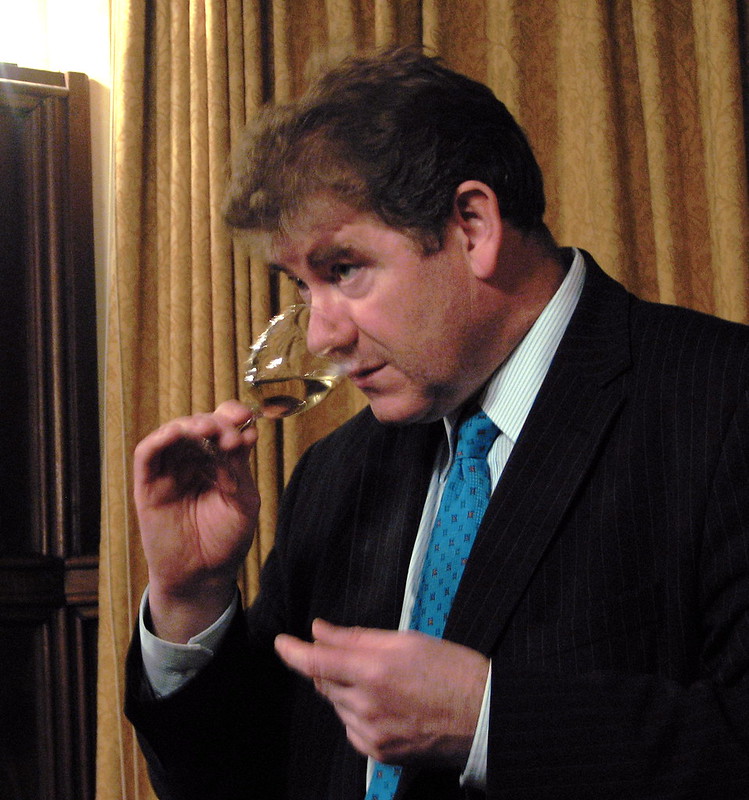 Me stopping you mid-sentence to detect notes of petrichor.
Me stopping you mid-sentence to detect notes of petrichor.Yesterday our family took our very first Pepsi Challenge—which happens to be 50 years old this year, by the way. And, sorry to brag here, but I confidently identified the Pepsi-Cola in all of its glorious superiority to Coca-Cola.
But wine? That’s a different story. I couldn’t identify a “note” of anything…but I’m going to claim that you likely can’t either.
In fact, our cola blind taste test reminded me of these wine taste tests I read about years ago in a piece that went viral on io91:
And so it appears I have good reason for my suspicion of people who are (or claim to be) really into wine. Not because I have anything against wine itself—I enjoy it as much as the next person—but because for some, being “into” wine is a red flag of right proper toffery. I recognize some people are sincere and earnest wine lovers, but I’d wager that with a larger segment it’s an affectation2.
Over a decade ago there was a winery in the Dogpatch neighborhood of San Francisco called Sutton Cellars, where proprietor and winemaker Carl Sutton produced his own “natural” (unfiltered, no added yeast) wines. He’d buy grapes from Mendocino, Russian River, and other regions, experimenting freely—he loved Carignane, wasn’t shy about Grenache, and was obsessed with vermouth. The guy was serious and passionate about winemaking, but the best part was his utterly unserious approach to presenting it. His tasting room on the corner of 22nd & Illinois was welcoming and relaxed, zero ego. The wine philosophy was simple: “What do you like to drink? Come check this out”—none of the “you should be detecting notes of blackcurrant, cedar, tobacco, and leather with hints of petrichor and crushed beetles” pretension you can find just 45 miles north in Napa.
Before that, at Michigan, we had the Wolverine Wine Club, which was supposed to introduce us uncouth MBAs to some refinement through good wine. But each event, no matter how elegant the venue, would devolve into utter debauchery. This so incensed the faculty advisor, who happened to be a world-renowned sommelier, that he quit indignantly. We look back on the WWC and laugh, but then, I think, that fun and enjoyment is the real meaning of oenophilia: the mirth of wine; not feigning the ability to detect notes of wet limestone and saddle soap.
 Me stopping you mid-sentence to detect notes of petrichor.
Me stopping you mid-sentence to detect notes of petrichor.
There is an inflection point, though, because Two Buck Chuck really is swill—you know it the moment you smell it. I suspect there’s a minimum threshold where you escape the bottom-shelf nastiness, though the research probably wasn’t testing wines that cheap. But once you’re above that floor3 those research findings kick in: people can’t tell the difference and actually prefer the cheaper option. A college girlfriend’s father once shared some wisdom: pick a price range that works for your wallet and figure out what you like within it. Hence the Trader Joe’s boxed Chardonnay sitting proudly in our fridge!
But here’s what I think actually drives my wine enjoyment: variety. When I’ve been drinking California Cab and Pinot4 for months, then suddenly have a Sangiovese or Grenache, my palate does a joyful triple lutz. It’s the same with food—you don’t notice your taste buds getting bored until you try something different and they light up again. So when I think I’m enjoying that ‘nicer’ bottle, I suspect it’s often less about superior quality and more about breaking the monotony.
So let the connoisseurs pontificate about terroir whilst you find your Sutton Cellars or secretly enjoy your delicious boxed wine. The science suggests you’re not missing anything—except maybe some pretentious codswallop.
Nunc est bibendum,
— ᴘ. ᴍ. ʙ.
Robbie Gonzalez, “Wine tasting is bullshit. Here’s why,” Gizmodo, May 8, 2013. ↩
Very high-end restaurants is sort of like this for me, too. I probably burned the roof of my mouth on scalding hot cheese pizza a few too many times to have sophisticated taste, but I’m skeptical. ↩
I have a price point in mind here, but to geo- and future-proof this post, I’ll refrain from disclosing. ↩
Cabernet Sauvignon (21% of CA production, 51% of Napa) and Pinot Noir (10% of CA, 22% of Sonoma) dominate Bay Area wine production. California Wine Institute, 2024, wineinstitute.org. ↩